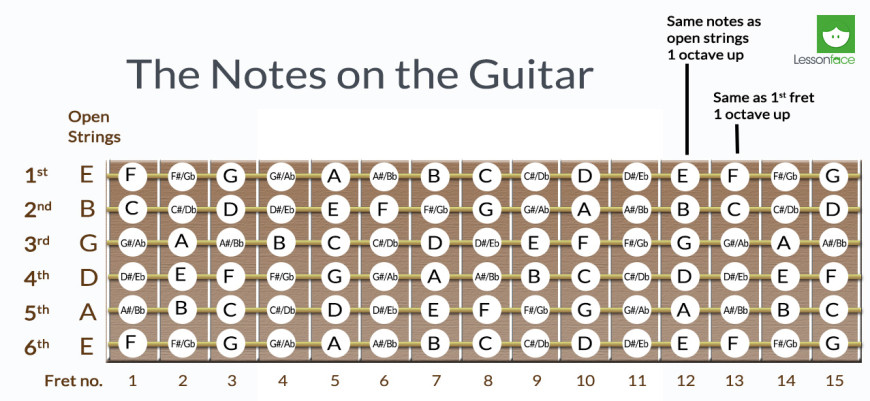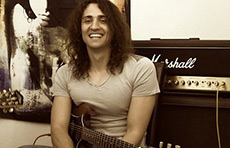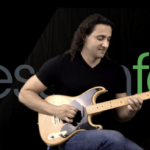The Importance of Knowing Where the Notes Are on the Fretboard of the Guitar

Let's face it--a lot of guitar players out there could not find all the C notes on the fretboard right away. Some would say that there is no need; that they are able to play the songs that they enjoy and improvise using the same chord shapes and pentatonic scale over and over again. That's fine if it's your goal. But if you want to expand your knowledge and be able to explore variations of the same chords and scale all over the fretboard, then learning where the notes are is extremely important.
Let's pick a simple example to illustrate this idea. Let's think of an A7 chord:
E—-—3---G------- B---2---C#------ G---2---A------- D---2---E------- A---0---A------- E---------------
The A7 chord is formed by T + M3 + P5 + m7 (if you know your intervals). If not, just think of the notes as you are able to find when playing those frets A + C# + E + G.
Now let's find those notes in different places of the fretboard and not worry about finding all four, or about finding them in a specific order (The process of rearranging chord tones is called Voicing).
E---5--A-----9--C#---12--E-- B---5--E-----8--G----10--A-- G---6--C#----9--E----12--G-- D--------------------------- A--------------------------- E---------------------------
So now we are able to play three variations of basically the same chord. The chord will sound different from one to another since we selected different notes to play, with different inversions. This can come very handy if you are stuck playing a song that starts on A7 and stays on A7 for a while.

The same Idea can be applied with different chords as well. Lets now think of a D major chord and also add the minor seventh to it.
E—-—2---F#---------5--A-----8--C----10--D-- B---1---C----------3--D-----7--F#---10--A-- G---2---A----------5--C-----7--D----11--F#- D---0---D---------------------------------- A------------------------------------------ E------------------------------------------
Now it s time for you guys to get to work: Using an E7 chord (E G# B D) find as many variation you can on the fretboard.
In the next article we will adapt the same concepts with scales. Please feel free to send your comments and questions!
 Rod Ferreira has been teaching guitar in the Phoenix area for over 10 years, and on Lessonface for about six months. Learn more about his background and book a lesson with Rod>>>
Rod Ferreira has been teaching guitar in the Phoenix area for over 10 years, and on Lessonface for about six months. Learn more about his background and book a lesson with Rod>>>

Comments
Craig Caver
Sat, 01/18/2020 - 2:30pm EST
Permalink
T + M3 + P5 + m7.
What does the T stand for? Interval or octave maybe? I usually see the root with a P!
Craig Caver
Sat, 01/18/2020 - 2:47pm EST
Permalink
Ah nevermind I think I
Ah nevermind I think I figured it out! You meant T for tonic right? Tonic/root.
Lessonface Support
Tue, 01/21/2020 - 3:29pm EST
Permalink
Hi Craig, to get your info
Hi Craig, to get your info faster, you can ask questions directly to Rod on his Lessonface profile.
Here's a link: https://www.lessonface.com/instructor/rod-ferreira